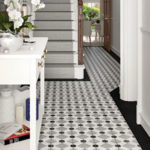Updates to British Standards for Wall & Floor Tiling
The British Standards for wall and floor tiling, BS 5385-1: 2018, have been updated with some significant changes included. These changes are part of the general review and are designed to reflect product changes and developments within the tiling industry since the publication of BS 5385-1: 2009.
The first major change is the introduction of a clause relating to workmanship, stating that work should be carried out with “efficient supervision and the employment of properly trained operatives, skilled to an appropriate level of confidence, certified by a recognised authoritative body, eg. The Tile Association”.
Another significant amendment is that plywood has now been excluded as a suitable substrate for directly fixing ceramic wall and natural stone tiles. Many tilers have already been using tile backer boards, such as Orbry Board, Marmox Multiboard and Schlüter KERDI-BOARD, for many years thanks to them being waterproof, strong, straight and providing an insulating layer. These tile backer boards are available to purchase at all branches of The Tile Source.
David Wilson, UK Head of Technical Services at BAL and member of the TTA Technical Committee said: “Previously it was recognised in BS5385 Part 1: 2009 that tiling direct to plywood was possible, providing this was restricted to small areas and be “installed in such a way that they provide a dimensionally stable and rigid background” the quality of plywood for tiling purposes has decreased significantly with cheaper imports flooding the market. While higher quality external grade plywood is still available – it is significantly more expensive.”
Adhesive coverage has been addressed, due to the increase in large format and heavy tiles. Previously 50% coverage was required, however the new standard sates “Tiles with a surface area of less than 0.1m², but which weigh more per square metre than 70% of the background’s capacity to carry the weight, should be solidly bedded e.g. the maximum weight of tile that can be supported by Gypsum plaster = 20kg; whereas 9mm thick porcelain tiles, which weigh approximately 18kg/m², weigh more than 70% of 20kg (14kg) therefore, they should be solidly bedded regardless of their size”
Grout joints have also seen an update thanks to the increase in the size of tiles. Tiles with a facial area of less than 0.1m² with no side more than 600mm in length require a minimum grout joint of 2mm, while those with a facial area 0.1m² to 1m² and up to 1200mm now need a minimum width of 3mm. For extra large tiles and panels, the grout joint increases relative to the size of the tile,
In the case of ceramic panels, the grout width needs to be increased relative to the size of the panel, for example a 3m panel must have a joint width of 5mm.
If you have any questions about the updates to the British Standards for tiling comment below or visit your nearest Tile Source trade counter.







